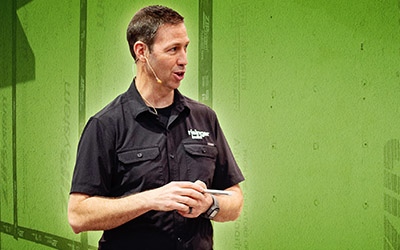Industry Trends
Marketing Insights
Written By
Ashley Virgil
Insights Specialist
Over the last five years, smart home technology has evolved in building and remodeling to respond to growing consumer demand. Now, the COVID-19 pandemic is redefining how we think about the spaces we call home. But how will this unprecedented season of caution and creative problem-solving affect our appetite for automation?
Here’s a quick look at the current landscape.
Workplace automation is leading the charge …
A recent eMarketer report suggests the pandemic accelerated an already “robot-filled future.” Disease spread and the human cost of employment will have businesses looking to more automated solutions to complete necessary tasks, signaling an increasing reliance on automation for health and safety as well as convenience.
- Robots or computer systems may assume roles previously held by humans, particularly in manufacturing and similar industries. Imagine if one person tests positive for COVID-19, triggering a plant shutdown. On the other hand, robots cannot get coronavirus. Robots can also help fulfill job functions in instances where human jobs are not eliminated: For example, robots in hospitals could be programmed to take sick patients’ vitals, though a doctor or other health care professional would be at the helm to oversee the process.
- Expect an uptick in robots used for cleaning and sanitation. UV cleaning is already practiced by health care and mass transit industries, but other companies can follow suit to help people feel more comfortable. Some may even feel safer in spaces cleaned by robots that can operate without the possibility of human error.
- Stores may fully automate their checkout process to eliminate human cashiers.
… and home automation isn’t far behind.
In late 2019, according to eMarketer, interactive security systems and smart speakers led the charge among smart home devices in the United States. And over the next six months, Strategy Analytics forecasts low-cost, flexible device and system installation services to expand as a new generation of millennial homeowners looks to integrate smart technology into their home, minus the setup hassle.
This trend has continued into the first half of 2020, but since the pandemic began, how we interact with our smart devices and home automation technology has changed. The current climate is certainly elevating our collective interest in making the home a safe, healthy place, and automation plays a critical role.
For example, voice technology has become even more important, since many people don’t want to touch their phone or other potentially germ-riddled surfaces. Whether relying on a voice assistant to count to 20 while you wash your hands or asking the new Centers for Disease Control and Prevention bot to help answer your burning COVID-19 questions, you can complete everyday tasks and get educated without touching a thing.
Meanwhile, “aging in place” remodels aren’t stopping at modifications like low countertops and ergonomic handles. Instead, they are also integrating smart technology to keep homeowners safe and connected.
The bottom line? Smart home technology’s ability to control devices, provide information and more should aid in faster adoption of a family of products that was already on the rise. And as home automation becomes even more mainstream, your products’ reliability, convenience and control will drive their success.
But will humans universally accept cons such as loss of control in favor of total adoption? Only time — and sales — will tell.
Need help positioning your products or solutions? Email me.


